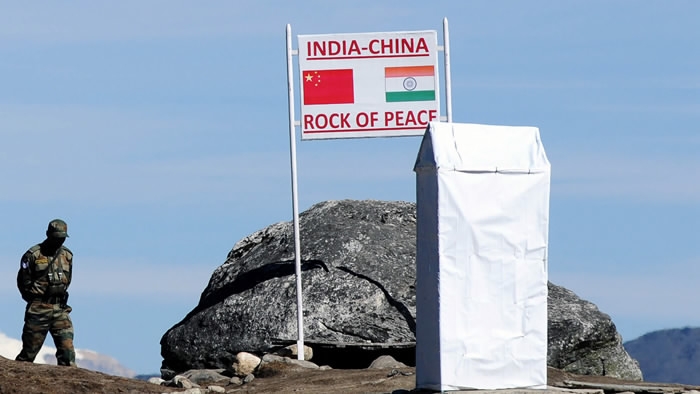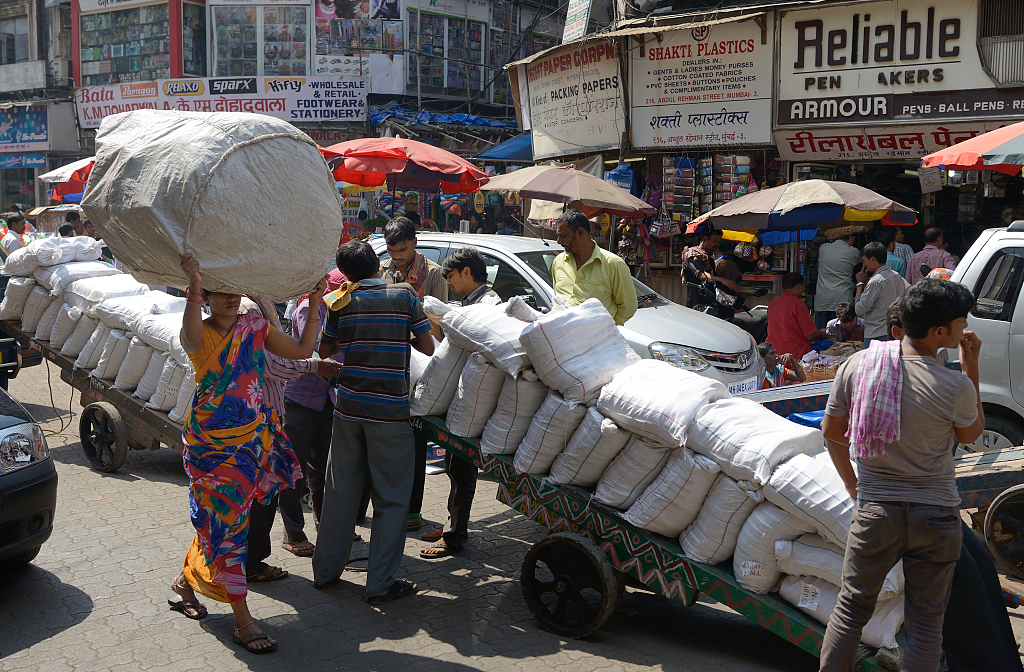
The India-China border. /AFP
The India-China border. /AFP
Editor's Note: Ken Moak, who taught economic theory, public policy and globalization at the university level for 33 years, co-authored a book entitled "China's Economic Rise and Its Global Impact" in 2015. The article reflects the author's opinion, and not necessarily the views of CGTN.
Being major developing economies and nuclear powers, China and India should engage instead of fighting each other, particularly amid the COVID-19 pandemic which ravaged the two countries' and the world's economy.
According to the International Monetary Fund, China's economy would only grow one percent in 2020, a significant fall from 6.8 percent a year earlier. The Indian economy performed even worse in that it is expected to contract by over five percent in 2020. What is more, both countries, India in particular, are wrought with domestic issues needing urgent attention.
To that end, escalating an issue that caused a war in 1962 and a number of subsequent skirmishes is the last thing India needs because conflicts gained nothing and the country's nominal GDP as a percent of global GDP only increased marginally from 2.3 percent in 1960 to three percent in 2019. The recent brawl between the two countries, which caused the deaths of 20 Indian soldiers and an unspecified number of Chinese troops and scores injured, thus, made no economic sense.
While territorial disputes were not the only reason why India's share of the global economic pie remained relatively flat over the last 60 years, they did play a role. Reallocating a portion of the military budget to socio-economic development programs such as job training and infrastructure construction could increase the size of India's economy and account for a larger share that of the world.
An efficient and reliable infrastructure system and increased labor quality would attract investment. Surely Indian politicians are aware of the economic consequences of a protracted conflict with China, thus begging the question: Why and who started the recent brawl?
Indian Prime Minister Narendra Modi said that Chinese soldiers did not enter on the Indian side of the Line of Actual Control (LAC), suggesting that it was not China that started the hand-to-hand combat. But Modi's words did not seem matter, Congress Party leader Rauhal Gandhi asked Modi when he will "evict" Chinese troops from the so-called Ladakh, the public and nationalist politicians demanding "revenge." The U.S. was quick to condemn China, U.S. Secretary of State Mike Pompeo branding China a "rogue actor," blaming it for escalating tension along the Chinese-Indian border.
It might be against this backdrop that Modi was forced to be more "assertive" on defending LAC, adding more military assets and personnel along it and boycotting Chinese goods. However, the problem with escalation of tensions will harm the two countries' national interests, particularly those of India.
India is one of the poorest countries on earth with over half the population living on less than 2.30 U.S. dollars a day and without inside toilets (as of 2019), according to the U.S. CIA Factbook. The country's priorities should be on poverty eradication or improving the socio-economic well-being of its people.

People outdoors on the street in Mumbai, India. /VCG
People outdoors on the street in Mumbai, India. /VCG
Poor roads, lack of supply chains, frequent power shortages and the absence of a pool of skilled labor, in part, were reasons why Modi's "Make in India" policy of turning the country into a manufacturing powerhouse failed. It was, in fact, largely for these reasons that large number of Western and Asian enterprises that did (eagerly) invest in India pulled out, leaving Modi's industrial initiative in a state of "hibernation" or worse.
According to The Hindu report in January, 2020, investment, industrial production and employment growth declined during the 2017/18 from the 2014 the year in which the "Make in India" industrial policy initiative was inaugurated.
Boycotting or barring Chinese exports and investment could exacerbate India's falling economic fortunes that have been made worse by COVID-19. Restricting Chinese exports would raise the prices of consumer goods, particularly those of smartphones and other electronic products which the "Made in China" ones dominated the Indian market. Barring Chinese investment would hurt India's technology and innovation ambition because it accounted for the majority of the country's technology startup enterprises.
Furthermore, the disputed territory is of little economic and geopolitical values to either country and probably planted by the British to ensure perpetual conflict between China and India, thus keeping their economies underdeveloped. Both share a common history, being economic and geopolitical powers before being colonized by Britain. Together, they accounted for over 55 percent of global GDP in the 1700s. There is no reason to believe that they could not regain that status with the "right" policies.
The two countries' large populations are hardworking, enterprising and value education and richly endowed with natural resources. Cooperation in exploiting these sources of economic growth would accelerate and sustain India's and China's long-term economic growth and stability. Investing in job training, for example, could make Modi's industrial policy a reality sooner rather than later. China is climbing the value-added manufacturing ladder and could channel lower-end manufacturing to India.
Taking the debate to its logical conclusion, India and China should and must live up to their obligations as members of a number of international organizations, cooperating with instead of against each other.
(If you want to contribute and have specific expertise, please contact us at opinions@cgtn.com.)